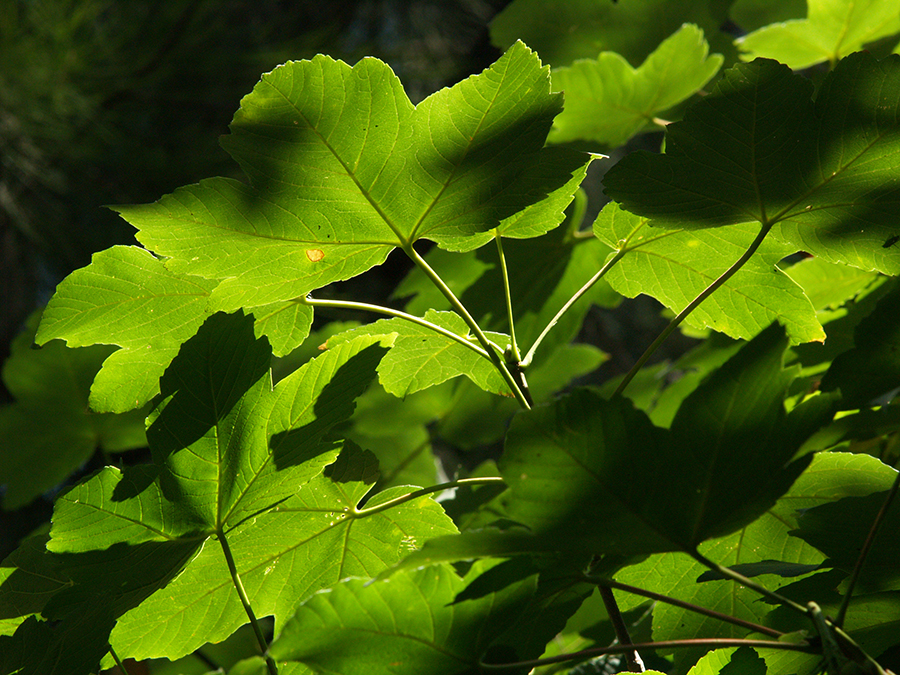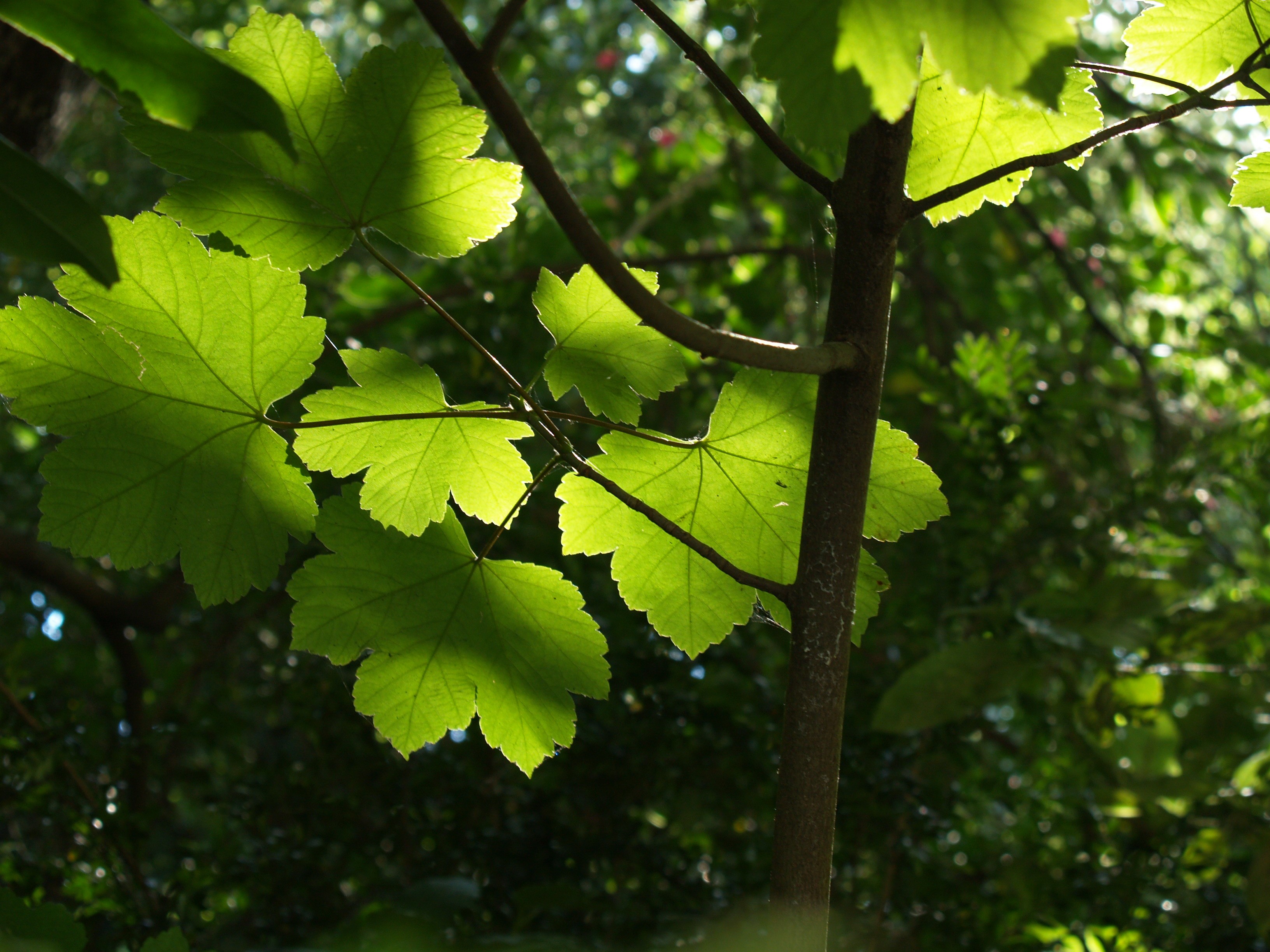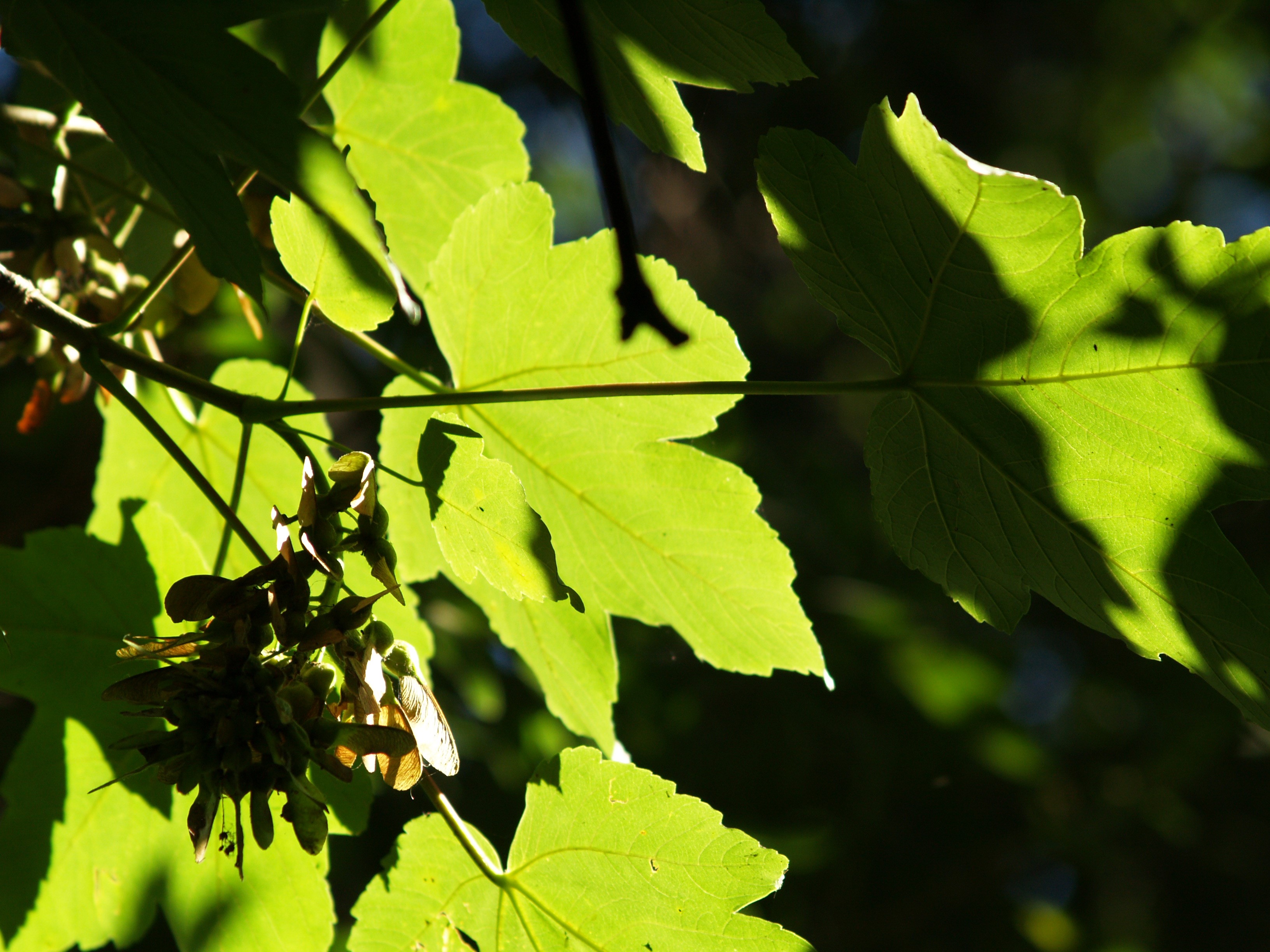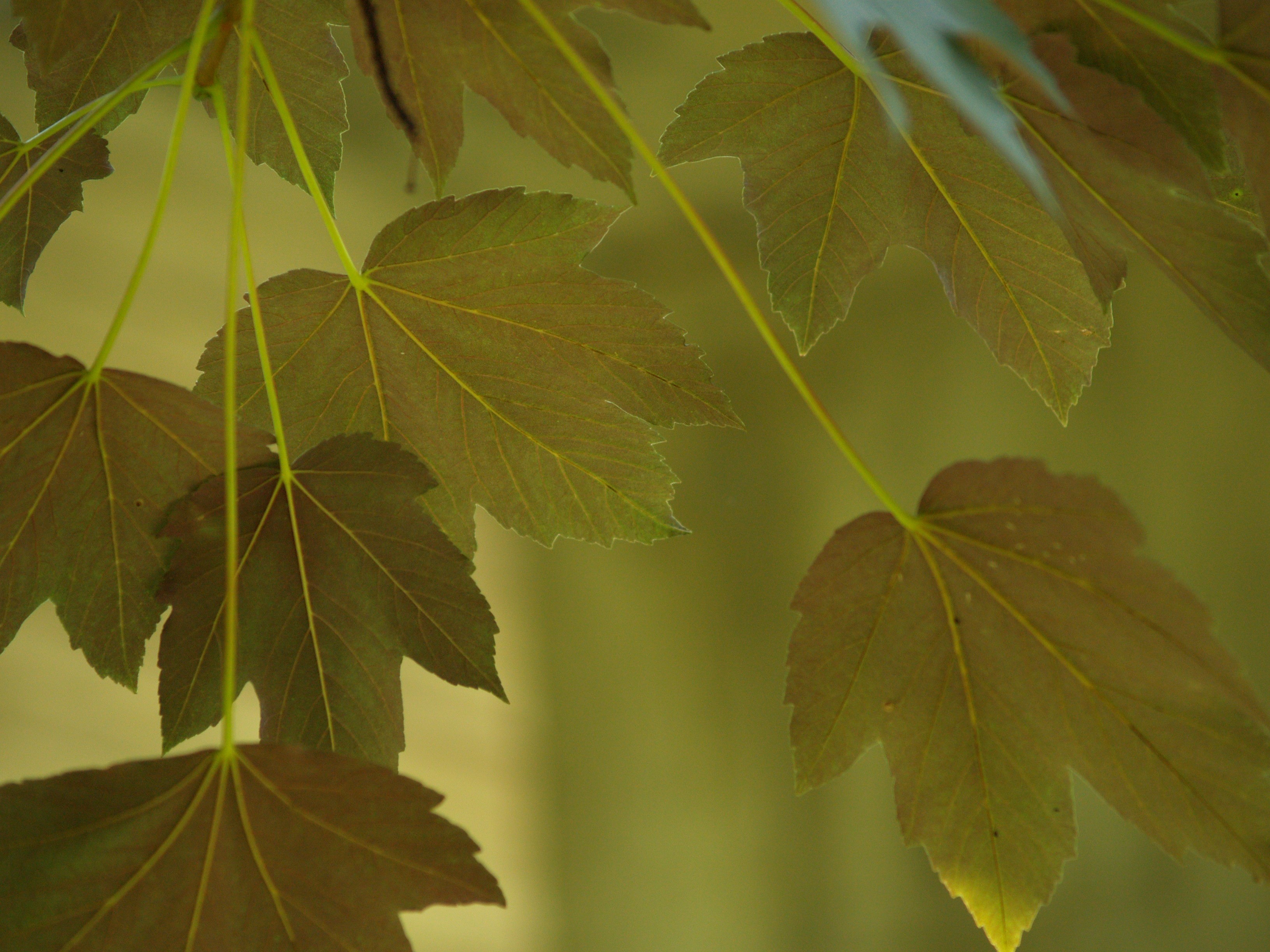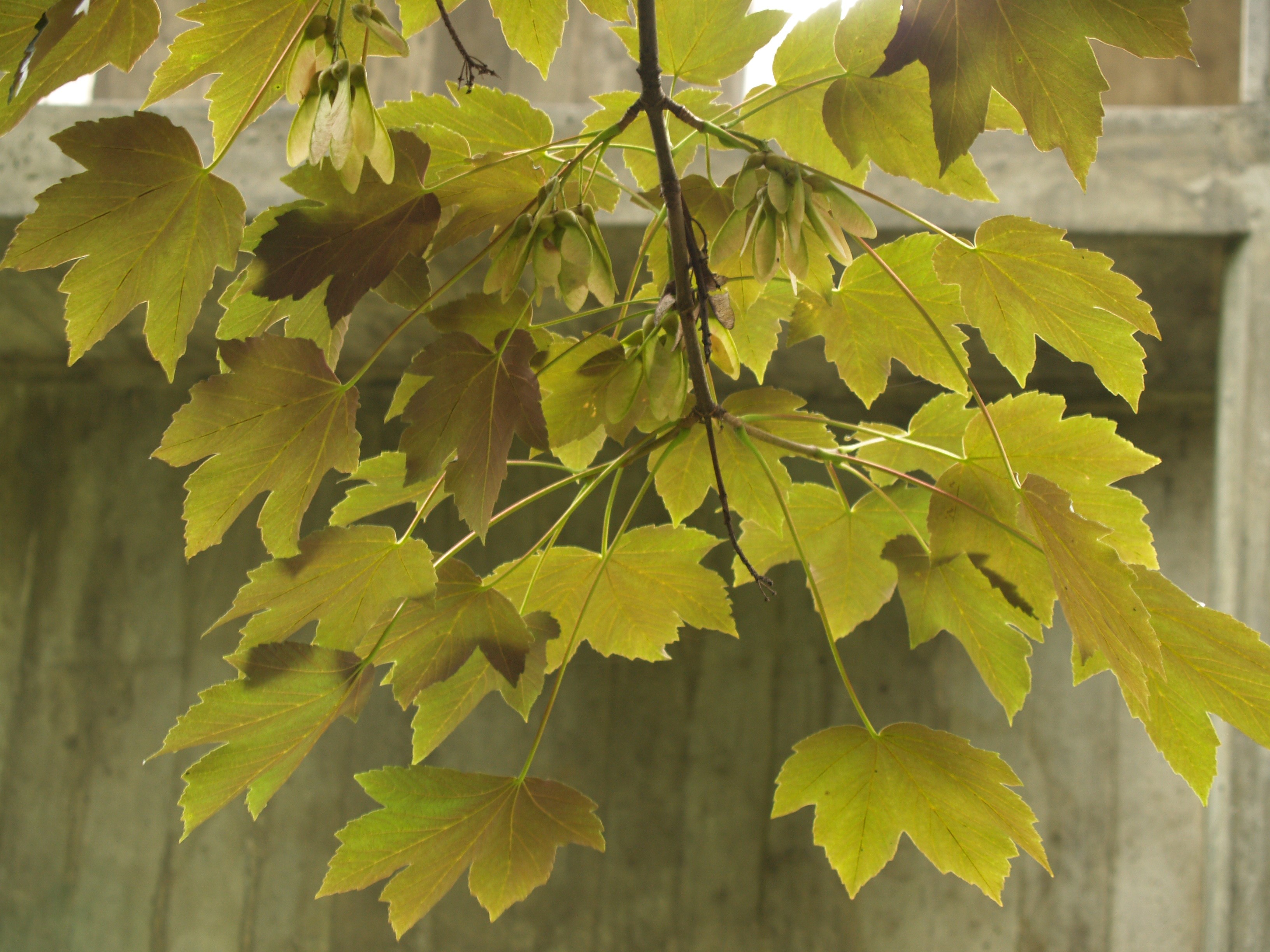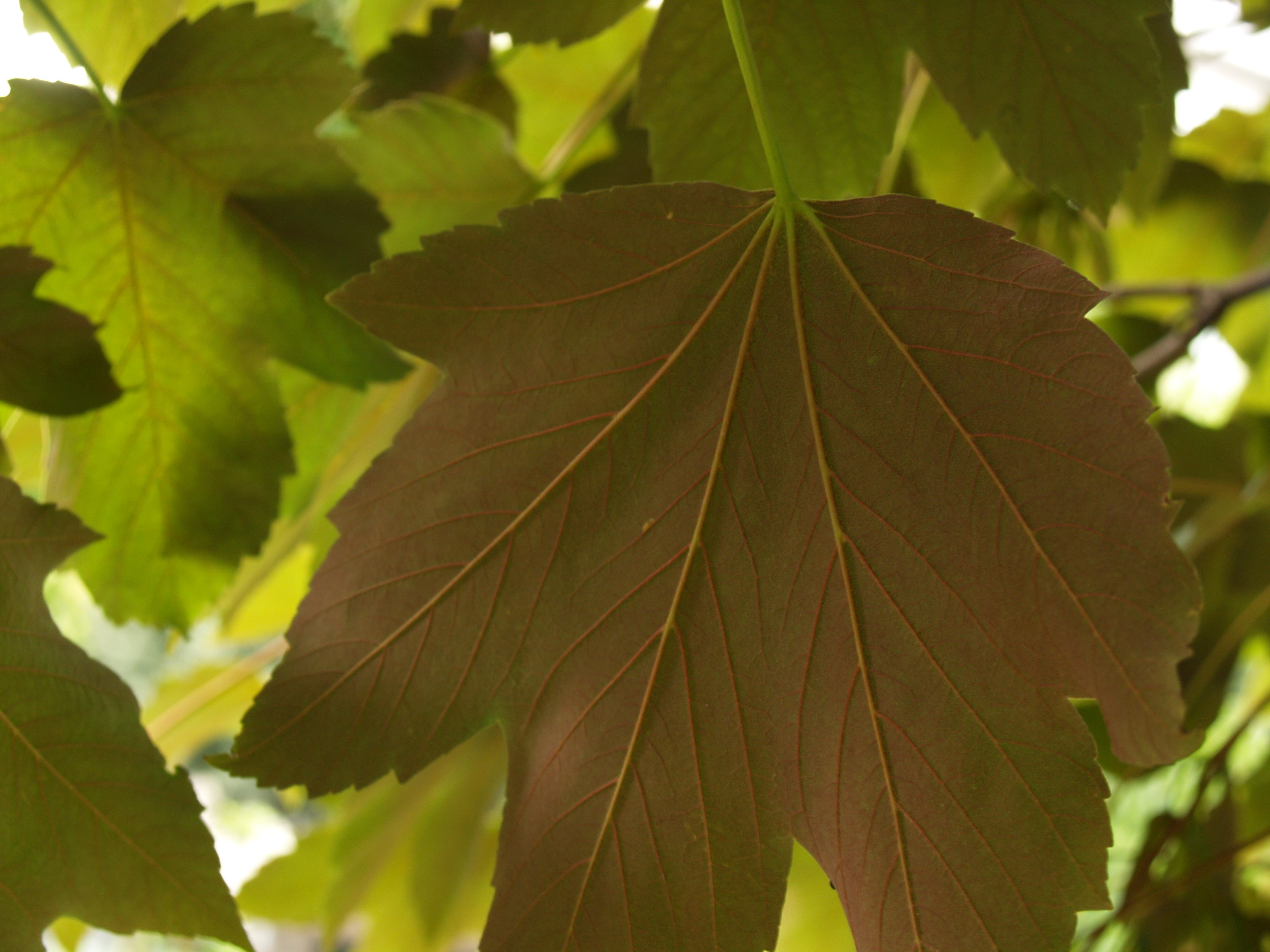
Sycamore
Acer pseudoplatanus
Family and description
Belonging to the Aceraceae family, Acer pseudoplatanus is a fast-growing deciduous tree that can reach a height of up to 30 m.
This tree has a large, egg-shaped crown. The trunk is greyish and scaly in adult trees.
Its leaves are green, ovate, about 10 to 20 cm long with a large petiole that sometimes has reddish tones. It has 5 acute lobes and irregularly sawn edges.
Its flowers, that are greenish yellow, bloom between May and June. They are arranged in a pendant panicle of up to 12 cm long.
The samara, its fruit, appears in late summer, usually grouped in pairs. Occasionally, three chambers may grow instead of two.
It is a monoecious species, which means that the same specimen contains male and female reproductive organs.
Origin and habitat
Native to central and southern Europe, in the Iberian Peninsula the Sycamore is found mainly in the Galician Massif, the Cantabrian Mountains and the Western Pyrenees. It may also be planted or occur semi-spontaneously elsewhere. It grows in beech, oak and black oak woods.
The Sycamore does not tolerate long periods of dryness, withstanding intense winter chills and summer heat as long as it has plenty water.
It can develop on calcareous or silicon soils. In the Iberian Peninsula it grows at altitudes of 200 m to just over 1800 m.
Uses and curiosities
The Sycamore is considered to be a very long-lived species, with some trees living for for about 500 years. It grows fast in the first years, tending to slow down with age.
It propagates well from cuttings, is pollinated by insects and is considered to be a melliferous species.
Its wood is light in colour, sometimes with pink tones, homogeneous, dense and relatively resistant to moisture. Widely used in carpentry, it is also used to manufacture kitchen utensils, components of musical instruments and handles for garden tools.
The purpurea variety, which has very dark red, almost black leaves, is frequently used in gardens.
